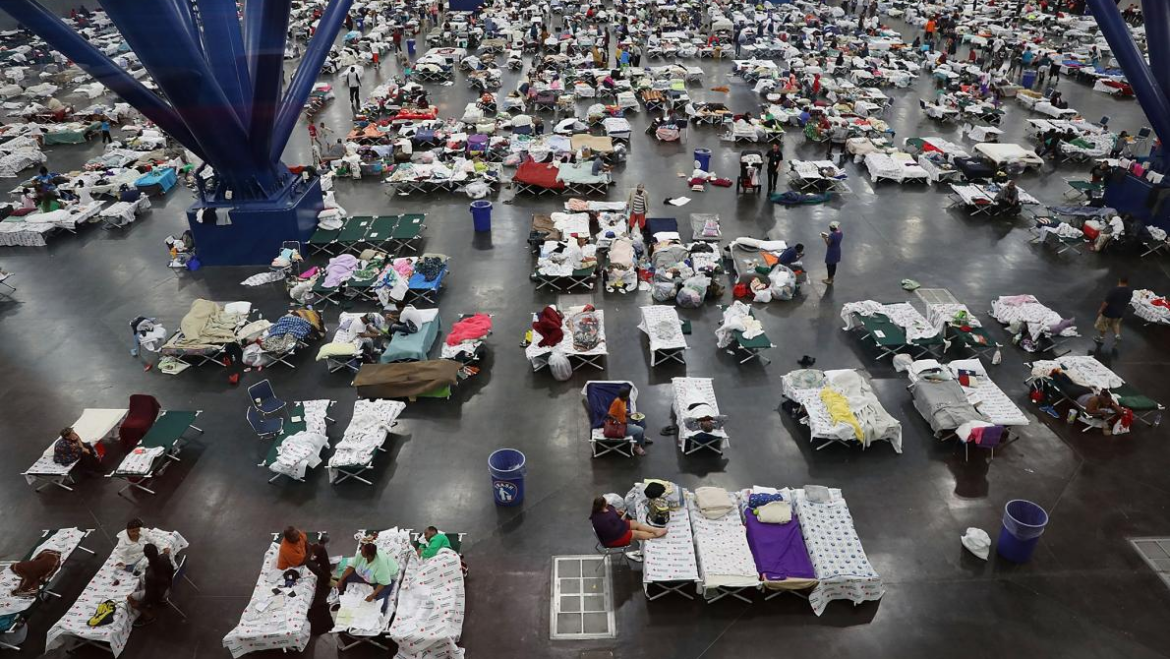The storms of the last few months have led to large numbers of households seeking disaster shelter. In response to the recent Hurricanes—including Harvey, Irma, and Maria—and the wildfires in California, the American Red Cross provided more than 1.3 million overnight stays in emergency shelters. This staggering number of emergency sheltering is more than what they have provided in the past 5 years.
“a serious challenge lies in how to successfully plan and prepare for devastating disasters the likes of which you have not historically experienced and never imagined possible”
Those homeowners or lease holders who sought shelter–many of whom hold insurance, stable jobs, and savings accounts–can often navigate access to government benefits, collect on insurance claims, and start the slow road to recovery on their own. Without these same financial means, however, others are forced to rely on supportive relief and recovery efforts in order to transition out of disaster shelters and back into a semblance of their lives.
One of the effects of these terrible disasters is the painful evidence that planning for the needs of low income and vulnerable populations in disasters is essential and, if overlooked, results in a longer road to recovery for the individuals, families, and communities whose lives are upended, with increased recovery costs at the local level which may be both unsustainable and costly.
With nearly 60% of Americans not able to afford common emergency expenses, how do we help communities better plan for disasters, especially as they impact low income and vulnerable populations? For the past several years, Cloudburst has been working to connect local emergency managers and planners with non-profit and service organizations so together, we can all better plan for vulnerable populations in anticipation of disasters. These include populations living in government subsidized housing, homeless shelters, and out on the street.
Some communities have made great strides in disaster preparedness, developing coordinated approaches with a range of stakeholders and establishing relocation plans, but a serious challenge lies in how to successfully plan and prepare for devastating disasters the likes of which you have not historically experienced and never imagined possible, such as some of the wide-spread flooding or raging fires we are seeing today?
It takes tremendous coordination between recovery, relief, government, and local community based organizations to strategically and tactically move people out of disaster shelters and back into the community. In some places, homeless service organizations are integrated into community disaster preparedness plans and are called upon in the midst of a crisis to support recovery and relief efforts, knowing best how to manage shelters and develop creative shelter relocation plans for those who have no place to call home. Unfortunately, this is not a standard, limiting the support that can be offered to a community’s most vulnerable populations and ultimately slowing the area’s overall recovery process.
At Cloudburst, we have been able to assist communities and support many homeless organizations impacted by the recent storms to help guide and navigate their involvement in local recovery efforts and are grateful for the opportunity to help move thousands of people out of disaster shelters and into more safe, stable, and secure housing.
This brings us back to the question of how to help communities plan for disasters they cannot imagine, with a particular focus on how those disasters will affect low income and vulnerable populations.
Whatever work we do must always have the well-being of the most vulnerable at the forefront or we will always be left grappling under a greater loss and cleaning up a bigger disaster than we would be facing otherwise, if, at the stage of planning, we planned for everyone.
–Michelle Hayes
President, The Cloudburst Group
Photo Credit: Erich Schlegel/Getty Images
For more information on our disaster preparedness and recovery services, please contact Chris Andrews.
<a href=”mailto:[email protected] ” >Contact Chris</a>

